Rp-144921-06
199 Stat Sampling Rev Proc (3-2-2007).doc
RP-144921-06 Statistical Sampling for purposes of Section 199
RP-144921-06
OMB: 1545-2072
Draft Date: March 2, 2007 CASE MIS No.: RP-144921-06
Part III
Administrative, Procedural, and Miscellaneous
26 CFR 601.105: Examination of returns and claims for refund, credit or abatement; determination of correct tax liability.
(Also Part I, §§ 199; 1.199-1 through 1.199-9, 1.199-3T, 1.199-5T, 1.199-7T, 1.199-8T.)
Rev. Proc. 2007-XX
SECTION 1. PURPOSE
This revenue procedure provides guidance for determining when statistical sampling may be used for purposes of § 199 of the Internal Revenue Code and establishes acceptable statistical sampling methodologies.
SECTION 2. BACKGROUND
.01 Section 199(a)(1) allows a deduction equal to 9 percent (3 percent in the case of taxable years beginning in 2005 or 2006, and 6 percent in the case of taxable years beginning in 2007, 2008, or 2009) of the lesser of (A) the qualified production activities income (QPAI) of the taxpayer for the taxable year, or (B) taxable income (determined without regard to § 199) for the taxable year (or, in the case of an individual, adjusted gross income (AGI)). Section 199(b)(1) limits the deduction for a taxable year to 50 percent of the W-2 wages paid by the taxpayer during the calendar year that ends in such taxable year.
.02 Section 199(c)(1) defines QPAI for any taxable year as an amount equal to the excess (if any) of (A) the taxpayer’s domestic production gross receipts (DPGR) for such taxable year, over (B) the sum of (i) the cost of goods sold (CGS) that are allocable to such receipts; and (ii) other expenses, losses, or deductions (other than the deduction under § 199) that are properly allocable to such receipts.
.03 Section 199(c)(2) provides that the Secretary shall prescribe rules for the proper allocation of items described in § 199(c)(1) for purposes of determining QPAI. Such rules shall provide for the proper allocation of items whether or not such items are directly allocable to DPGR.
.04 Section 199(c)(4)(A) defines DPGR to mean the taxpayer’s gross receipts that are derived from: (i) any lease, rental, license, sale, exchange, or other disposition of (I) qualifying production property (QPP) that was manufactured, produced, grown, or extracted (MPGE) by the taxpayer in whole or in significant part within the United States; (II) any qualified film produced by the taxpayer; or (III) electricity, natural gas, or potable water (collectively, utilities) produced by the taxpayer in the United States; (ii) in the case of a taxpayer engaged in the active conduct of a construction trade or business, construction of real property performed in the United States by the taxpayer in the ordinary course of such trade or business; or (iii) in the case of a taxpayer engaged in the active conduct of an engineering or architectural services trade or business, engineering or architectural services performed in the United States by the taxpayer in the ordinary course of such trade or business with respect to the construction of real property in the United States.
.05 Section 199(c)(4)(B) excepts from DPGR gross receipts of the taxpayer that are derived from: (i) the sale of food and beverages prepared by the taxpayer at a retail establishment; (ii) the transmission or distribution of utilities; or (iii) the lease, rental, license, sale, exchange, or other disposition of land.
.06 Section 199(c)(5) defines QPP to mean: (A) tangible personal property; (B) any computer software; and (C) any property described in § 168(f)(4) (certain sound recordings).
.07 Section 199(c)(6) defines a qualified film to mean any property described in § 168(f)(3) if not less than 50 percent of the total compensation relating to production of the property is compensation for services performed in the United States by actors, production personnel, directors, and producers. The term does not include property with respect to which records are required to be maintained under 18 U.S.C. § 2257 (generally, films, videotapes, or other matter that depict actual sexually explicit conduct and are produced in whole or in part with materials that have been mailed or shipped in interstate or foreign commerce, or are shipped or transported or are intended for shipment or transportation in interstate or foreign commerce).
.08 Section 199 was added to the Code by section 102 of the American Jobs Creation Act of 2004 (Act) (Public Law 108-357), and amended by section 403(a) of the Gulf Opportunity Zone Act of 2005 (GOZA) (Public Law 109-135), section 514 of the Tax Increase Prevention and Reconciliation Act of 2005 (Public Law 109-222), and section 401 of the Tax Relief and Health Care Act of 2006 (Public Law 109-432). Section 102(e)(1) of the Act, as amended by section 403(a)(19) of GOZA, provides that the amendments made by section 102 of the Act shall apply to taxable years beginning after December 31, 2004. Section 102(e)(2) of the Act, as amended by section 403(a)(19) of GOZA, provides that, in determining the deduction under § 199, items arising from a taxable year of a partnership, S corporation, estate, or trust beginning before January 1, 2005, shall not be taken into account for purposes of § 199(d)(1).
SECTION 3. SCOPE
This revenue procedure applies to a taxpayer filing an original return, under examination, in litigation, or making a refund claim with respect to § 199.
SECTION 4. APPLICATION
.01 In general. For purposes of § 199, the use of statistical sampling will be considered a reasonable method that is satisfactory to the Secretary to the extent the sampling methodology used meets the requirements of section 4.02 of this revenue procedure and follow the procedures provided in Appendix A (Sampling Plan Standards), Appendix B (Sampling Documentation Standards), and Appendix C (Technical Formulas). For example, pursuant to this revenue procedure, statistical sampling may be used to allocate gross receipts between DPGR and non-DPGR under § 1.199-1(d)(1) of the Income Tax Regulations; determine whether gross receipts qualify as DPGR on an item-by-item basis under § 1.199-3(d)(1); allocate CGS between DPGR and non-DPGR under § 1.199-4(b)(2)(i); and allocate deductions that are properly allocable to DPGR or gross income attributable to DPGR under § 1.199-4(c)(1).
.02 When statistical sampling is appropriate. The appropriateness of using a statistical sample for purposes of § 199 is a facts and circumstances determination. Factors used in determining whether a statistical sample is appropriate include, but are not limited to, the time required to analyze large volumes of data, the cost of analyzing data, the existence of verifiable information relevant to the taxpayer’s § 199 calculation, and the availability of more accurate information. For purposes of § 199, statistical sampling will generally be considered appropriate if the taxpayer can demonstrate a compelling reason for its use.
.03 Examples.
Example 1. X manufactures domestically and sells a variety of mechanical fasteners, including bolts, nuts, and screws. Some of these products are not manufactured by X but instead are purchased from non-related entities. In many cases, products that are purchased by X are the same type of products manufactured by X. In addition, X manufactures the same products in Mexico. Because these products come in many different sizes, compounds, and packages, X sells over five thousand items within the meaning of § 1.199-3(d).
X has a separate stock keeping unit (SKU) for each of its items. X’s computerized sales journal does not identify whether an item sold was manufactured by X in the United States, manufactured by X in Mexico, or manufactured by a non-related entity. However, X’s sales journal does maintain the SKU number for each item and is capable of determining the gross receipts derived from the sale of each item. X has devised a methodology to determine what portion, if any, of the gross receipts derived from the sale of each SKU qualifies as DPGR. X estimates it needs one staff-day to make this determination for each SKU. Therefore, X would have to spend over five thousand staff-days to make a determination regarding DPGR with respect to all of its sales.
In this case, it would be appropriate for X to use statistical sampling to determine DPGR derived from the sale of each SKU.
Example 2. Y domestically manufactures fertilizer, an MPGE activity. When Y sells its fertilizer to a customer, it does so by entering into a contract wherein Y agrees to apply its fertilizer to the customer’s lawn. The application services provided by Y are not an MPGE activity. Each contract contains variables such as the amount of fertilizer to apply, the frequency of the service, the size of lawn, and specific customer discounts. Each of these variables affects the total contract price.
Y ‘s computerized accounting system does not track what portion of its gross receipts is derived from the sale of fertilizer and what portion is derived from services. In 2005, Y had 20,000 separate contracts. Y has determined that there is sufficient information in each contract to separate the fertilizer application services from the sale of fertilizer. However, the time and expense involved in the manual review of 20,000 contracts make this determination impractical. In this case, it would be reasonable for Y to use statistical sampling to determine the DPGR derived from the sale of fertilizer.
Example 3. PRS provides a broad range of consulting services for dental practices. In addition to its consulting services, PRS develops and licenses specialized software for managing dental records. In 2005 PRS had 50 customers. PRS can determine the amount of DPGR generated in a particular tax year through a simple review of its contracts. Given the limited number of contracts to be reviewed, pursuant to section 4.02 of this section, there is no compelling reason for PRS’s use of statistical sampling to determine its DPGR.
Example 4. Z produces, distributes, and licenses motion pictures and has been doing so since 1930. Z has a collection of over 5,000 films some of which Z produced within the United States and some of which it produced abroad. Z believes that historical records exist with respect to each film in its collection and that by reviewing these records it is possible to determine whether a particular film represents a “qualified film” produced by Z for purposes of § 199(c)(4)(A)(i)(II) and (c)(6). However, the time and costs involved in obtaining and reviewing such records on an individual film basis are significant. In this case, Z could use statistical sampling to determine the DPGR derived from the license of its film collection.
Example 5. Assume the same facts as in Example 4 except that Z develops and executes a proper sampling plan as described in Appendix A. In the process, Z discovers that for some of the sampled films it has no historical records and no reliable data can be obtained from other sources that would help determine whether or not each film represents a “qualified film” produced by Z for purposes of § 199(c)(4)(A)(i)(II) and (c)(6). In accordance with Paragraph 5 of Appendix A, Z must give a value to any film selected as part of its sample. Therefore, if a film is selected for which no historical records and no reliable data can be obtained, Z will be required to treat the selected film as failing the requirements to be a “qualified film” produced by Z for purposes of § 199(c)(4)(A)(i)(II) and (c)(6).
Example 6. X manufactures and sells a variety of tools. Some tools sold by X are manufactured entirely by X in the United States. Other tools sold by X are purchased for resale from F, an unrelated foreign corporation. X maintains a computerized sales journal which tracks whether a tool sold by X was manufactured by X or F. Assuming the gross receipts derived from the sale of tools manufactured by X qualify as DPGR and gross receipts derived from the sale of tools purchased from F for resale do not qualify as DPGR, the use of statistical sampling by X to compute its DPGR from the sale of tools would not be appropriate because evidence is readily available from another source that can be demonstrated to be a more accurate determination of DPGR.
.04 Limitations.
(1) This revenue procedure applies only to § 199.
(2) This revenue procedure does not establish the correctness of a taxpayer’s interpretation of § 199.
(3) This revenue procedure does not preclude the Internal Revenue Service from raising or pursuing any income, employment, or other tax issues identified in the review of a statistical sample.
SECTION 5. EFFECTIVE DATE
This revenue procedure is generally effective for taxable years beginning on or after [INSERT DATE REVENUE PROCEDURE IS RELEASED]. However, taxpayers may apply this revenue procedure to taxable years beginning after December 31, 2004, and before [INSERT DATE REVENUE PROCEDURE IS RELEASED].
SECTION 6. PAPERWORK REDUCTION ACT
The collection of information contained in this revenue procedure has been reviewed and approved by the Office of Management and Budget in accordance with the Paperwork Reduction Act (44 U.S.C. 3507) under control number 1545-XXXX.
An agency may not conduct or sponsor, and a person is not required to respond to, a collection of information unless the collection of information displays a valid OMB control number.
The collection of information in this revenue procedure is in Appendix B. This information is required to ensure compliance with the statistical sampling methodology contained in this revenue procedure. The information will be used to evaluate compliance with the procedures described in this revenue procedure. The collection of information is mandatory. The likely recordkeepers are businesses or other for-profit institutions.
The estimated total annual recordkeeping burden is 2,400 hours. The estimated annual burden per recordkeeper varies from 6 to 10 hours, depending on individual circumstances, with an estimated average of 8 hours. The estimated number of recordkeepers is 300.
Books or records relating to a collection of information must be retained as long as their contents may become material in the administration of any internal revenue law. Generally tax returns and tax return information are confidential, as required by 26 U.S.C. 6103.
DRAFTING INFORMATION
The authors of this revenue procedure are David McDonnell and Lauren Ross Taylor of the Office of Associate Chief Counsel (Passthroughs and Special Industries). For further information regarding this revenue procedure, contact Mr. McDonnell or Ms. Taylor at (202) 622-3040 (not a toll free call). For further information regarding Appendices A, B, and C, contact Michael Curley of the Large and Mid-Size Business Division at (630) 699-6020 (not a toll free call).
APPENDIX A
SAMPLING PLAN STANDARDS
The statistical sampling must be conducted in accordance with the following methodology.
1. The statistical sample must be conducted in an unbiased scientific manner with the goal of achieving the correct answer. Any attempt to manipulate the process to achieve a desired result will invalidate the sample. However, steps designed to improve the precision of the estimate, such as stratification techniques, are acceptable and often preferred.
2. Statistical sampling methodology may not include the use of judgment sampling.
3. Taxpayers may apply the results of a statistical sample only to transactions that both (a) occurred in the taxable year in which the § 199 deduction is recognized and (b) involve items included in the population from which the statistical sample was taken.
4. Any estimated amount must be based on a statistical sample, in which each sampling unit has a known (non-zero) chance of selection, using either a simple random sampling method or stratified random sampling method.
5. A conclusion must be reached as to the treatment of each selected sampling unit. It is never valid to replace a sampling unit that was selected in the random selection process with another sampling unit, merely because documentation is unavailable or difficult to obtain. In evaluating a sampling unit, the decision reached as to the treatment of the sampling unit must be the same as the conclusion which would be reached if that sampling unit was encountered in a 100% analysis. Therefore, a sampling unit with documentation that is unavailable or difficult to obtain must be treated as failing the § 199 requirement(s) being tested.
6. In general, the computation of any estimated amount must be at the least advantageous 95% one-sided confidence limit. The “least advantageous” confidence limit is either the upper or lower limit that results in the least benefit to the taxpayer. However, if the precision of estimated difference divided by the estimated difference does not exceed 10%, the point estimate may be used in place of the least advantageous confidence limit. All strata for which “substantially all” of the population sampling units are sampled will be treated as 100% strata. That is, the overall point estimate and its precision will be estimated by treating all 100% strata appropriately for the sample design used. Also, the calculation of the denominator for the relative precision will exclude all 100% strata. For this revenue procedure, “substantially all” is defined as 80% or more.
7. Recognizing that many methods exist to estimate population values from the sample data, only the following estimators will be considered acceptable by the Service. Variable estimators permitted include the mean (also known as the direct projection method), difference (using “paired variables”), (combined) ratio (using a variable of interest and a “correlated” variable), and (combined) regression (using a variable of interest and a “correlated” variable). The first variable used for the difference, ratio and regression estimators must be the variable used in the mean estimator. The second variable used for the difference, ratio and regression estimators must be a variable that can be paired with the first variable and should be related to the first variable. For example, in a typical audit-sampling situation, the first variable would be the audited value of a transaction and the second variable would be the originally reported value of the same transaction. Because the latter two variable methods are statistically biased, there must be a demonstration that the bias is negligible before the Service will accept the method.
8. Variable sampling plans must use the qualifying final estimate with the smallest
overall standard error as an absolute value (for example, the size of the estimate is irrelevant in the determination of the reported value).
9. Variable sampling plans must calculate confidence limits by addition and subtraction of the precision of the estimate from the point estimate in which the determination of precision proceeds by multiplication of the standard error by (i) the 95% one-sided confidence coefficient based on the Student’s t-distribution with the appropriate degrees of freedom, or (ii) 1.645 (the normal distribution), assuming the sample size is at least 100 in each non-100% stratum.
10. To demonstrate that little statistical bias exists for either the (combined) ratio or regression method, the following applies after excluding all strata tested on 100% basis (the entire population of a stratum is selected for evaluation).
a. The total sample size of all strata must be at least 100 units.
b. Each stratum for a population estimate should contain at least 30 sample units.
c. The coefficient of variation of the paired variable must be 15% or less. The coefficient of variation of the paired variable (y) is defined as the standard error of the total “y” variables divided by point estimate of the total “y” variables when the “y” variables are commonly the reported values in accounting situations.
d. The coefficient of variation of the primary variable of interest, represented by either the corrected value or the difference between the reported and corrected values in common accounting situations, must be 15% or less. The coefficient of variation for the corrected value (x) is defined as the standard error of the total “x” variables divided by point estimate of the total “x” variables when the “x” variables are commonly the corrected values in accounting situations. The coefficient of variation for the difference (d) between the reported and corrected values (x-y) is defined as the smaller of the standard error of the total “x-y” or total “d” variables divided by the amount equaling total population value represented by “Y” plus point estimate of the total “x-y” or total “d” variables or the standard error of the total “x-y” or total “d” variables divided by the total “x-y” or total “d” variables when the “x-y” variables are commonly the difference (d) between the reported (y) and corrected (x) values in accounting situations.
e. For only the (combined) ratio method, the reported values of units must be of the same sign.
11. A written sampling plan is required prior to the execution of a sample. A plan must include the following:
a. The objective of the plan including a description of the value for estimation and the applicable taxable year;
b. Population definition and reconciliation of the population to the tax return;
c. Definition of the sampling frame;
d. Definition of the sampling unit;
e. Source of the random numbers, the starting point or seed, and the method of selection;
f. Sample size, along with supporting factors in the determination;
g. Method to associate random numbers to the frame;
h. Steps to ensure that the serialization of the frame is independent of the drawing of random numbers;
i. Steps for evaluating the sampling unit; and
j. The estimator that was used for appraising the sample.
APPENDIX B
SAMPLING DOCUMENTATION STANDARDS
The taxpayer must retain adequate documentation to support the statistical application, sample unit findings, and all aspects of the sample plan and execution. The execution of the sample must include information for each of the following items:
1. The seed or starting point of the random numbers;
2. The pairing of random numbers to the frame along with supporting information to retrace the process;
3. List of sampling units selected and the results of the evaluation of each unit;
4. Supporting documentation such as notes, invoices, purchase orders, and project descriptions that support the conclusion reached about each sample item;
5. The calculation of the projected estimate(s) to the population, including computation of the standard error of the estimate(s);
6. A statement describing any slips or blemishes in the execution of the sampling procedure and any pertinent decision rules; and
7. Computation of all associated adjustments.
APPENDIX C
TECHNICAL FORMULAS
The formulas below are included to clarify the statistical sampling terms used and to ensure consistent application of the procedures described in the revenue procedure.
UNSTRATIFIED (SIMPLE RANDOM SAMPLE) STRATIFIED
MEAN ESTIMATOR MEAN ESTIMATOR

Sample Mean of Audited Amounts
![]()
Estimate of Total Audited Amount
![]()
![]()
Estimated Standard Deviation of the Audited Amount
![]()
Estimated Standard Error of the Total Audited Amount


Achieved Precision of the Total Audited Amount
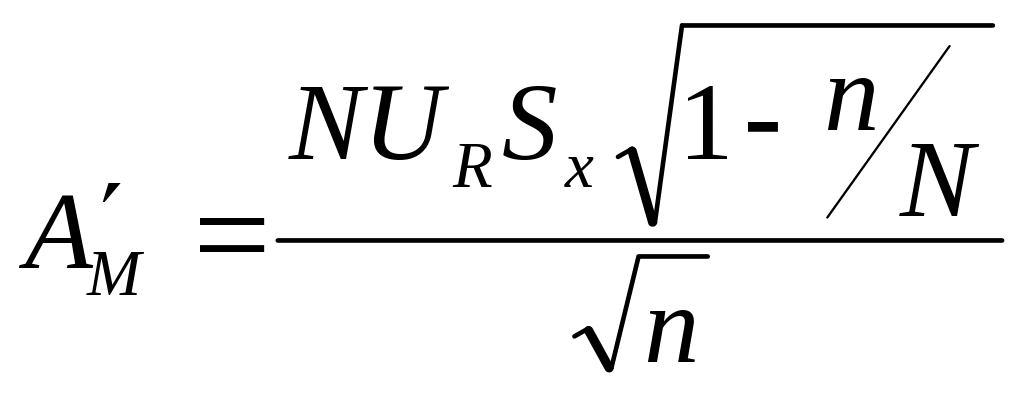

UNSTRATIFIED (SIMPLE RANDOM SAMPLE) STRATIFIED
DIFFERENCE ESTIMATOR DIFFERENCE ESTIMATOR

Estimate of Total Difference
![]()
![]()
Estimate of Total Audited Amount
![]()
![]()
Estimated Standard Deviation of the Difference Amount
![]()
Estimated Standard Error of the Difference Amount


Achieved Precision of the Difference Amount
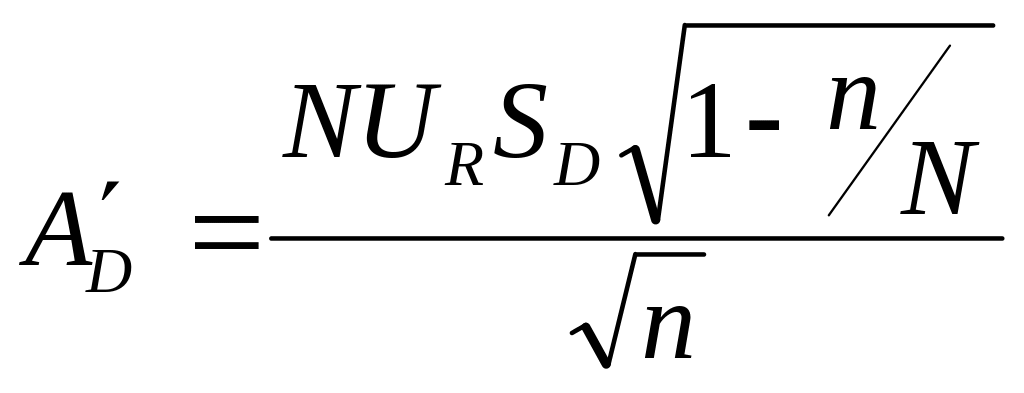

UNSTRATIFIED (SIMPLE RANDOM SAMPLE) STRATIFIED
RATIO ESTIMATOR COMBINED RATIO ESTIMATOR

Estimated Ratio of Audited Amount to Recorded Amount
![]()
![]()
Estimate of Total Audited Amount
![]()
![]()
Estimated Standard Deviation of the Ratio
![]()
Estimated Standard Deviation of the Ratio in ith Stratum
![]()
Estimated Standard Error of the Ratio Amounts

![]()
Achieved Precision of the Ratio Amounts
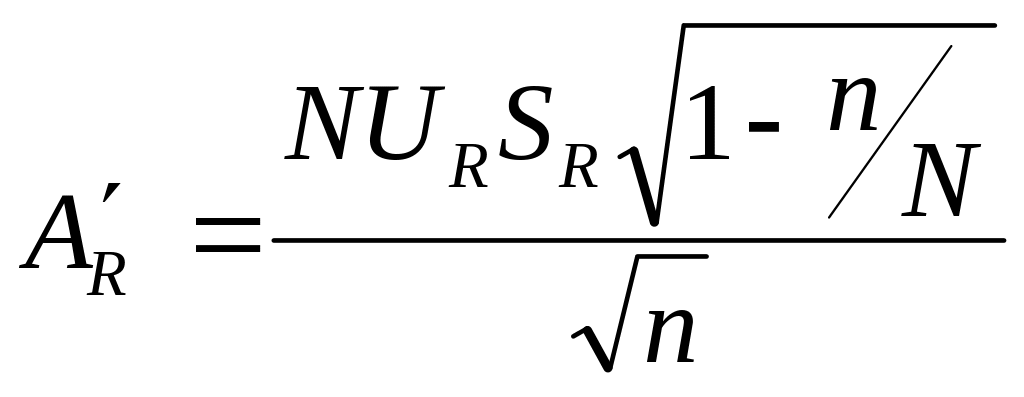
![]()
UNSTRATIFIED (SIMPLE RANDOM SAMPLE) STRATIFIED
REGRESSION ESTIMATOR COMBINED REGRESSION ESTIMATOR

Estimated Regression Coefficient
![]()
![]()
Estimate of Total Audited Amount
![]()
![]()
Estimated Standard Deviation of the Regression Amounts
![]()
Estimated Covariance between the Audited and Recorded Amounts in ith Stratum
![]()
Estimated Standard Deviation between the Audited and Recorded Amounts in ith Stratum
![]()
Estimated Standard Error of the Audited and Recorded Amounts
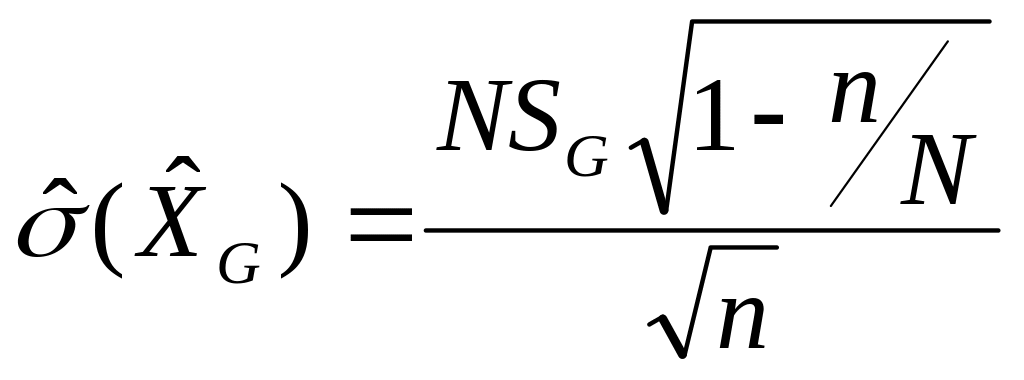
![]()
Achieved Precision of the Audited and Recorded Amounts
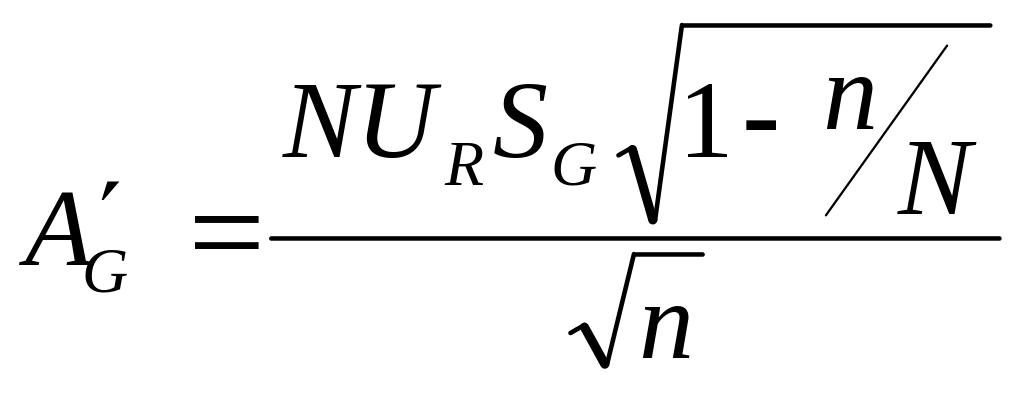
![]()
Definition of Symbols
-
TERM
DEFINITION
n
Sample Size
N
Population Size
x
The value of the sampling unit that is being used as the primary variable of interest. In audit sampling, this would be the audited (or revised) value of the transaction.
y
The value of the sampling unit that is being used as the “paired” variable that is related to the variable of interest. In audit sampling, this would be the reported (or original) value of the transaction.
d
The value of the sampling unit that is the difference between “paired” variable (y) and the variable of interest (x). That is, d = x – y. In audit sampling, this would be the difference (or the change) of each transaction’s value.
X
The total value of the primary variable of interest. In audit sampling, this would be the estimated total audited value of the population. Typically, this value is not known for the entire population and is estimated based on the statistical sample selected.
Y
The total value of the variable that is paired with variable of interest. In audit sampling, this would be the total reported value of the population. Typically, this value is known for the entire population and may be estimated based on the statistical sample selected.
D
The total value of the difference between the “paired” variable and the variable of interest. In audit sampling, this would be the estimated total difference of the population. Typically, this value is not known for the entire population and is estimated based on the statistical sample selected.
UR
The confidence coefficient which is based on either the Student’s t-distribution or the normal distribution. For example, a 95% one-sided confidence coefficient based on the normal distribution is 1.645. This term is often referred to as the t-value and the z-value.
| File Type | application/msword |
| File Modified | 2007-03-02 |
| File Created | 2007-03-02 |
© 2025 OMB.report | Privacy Policy